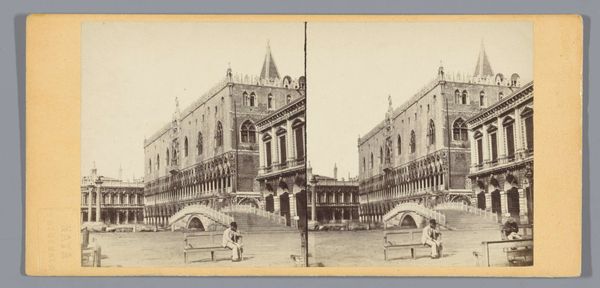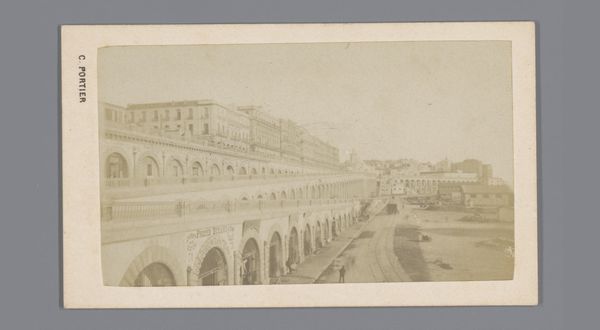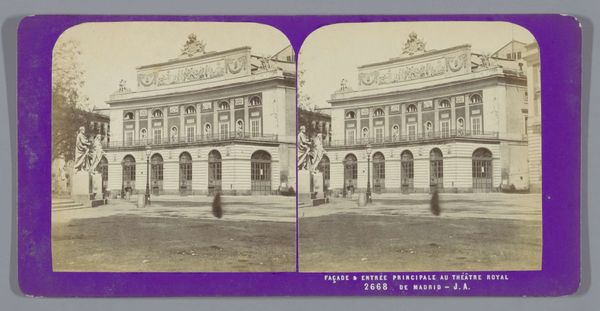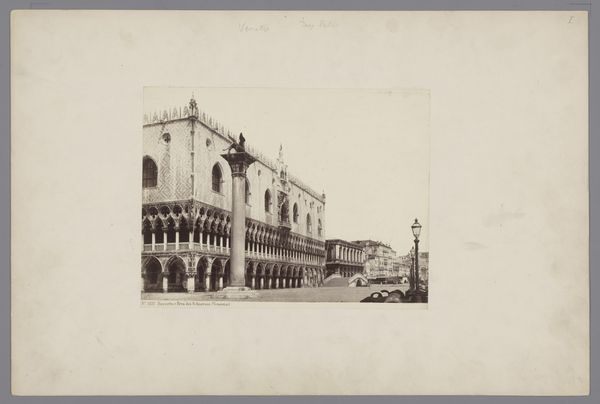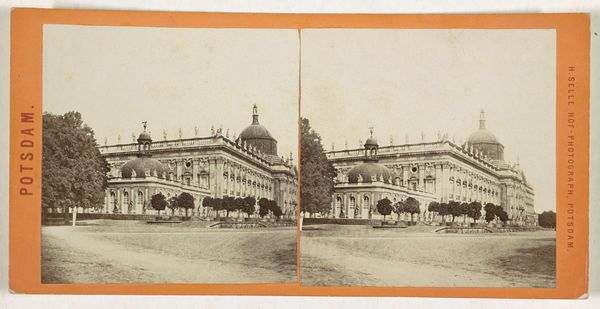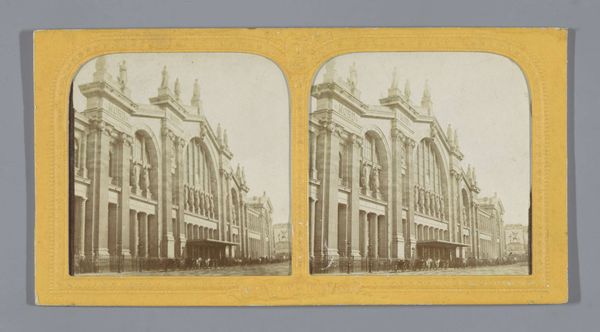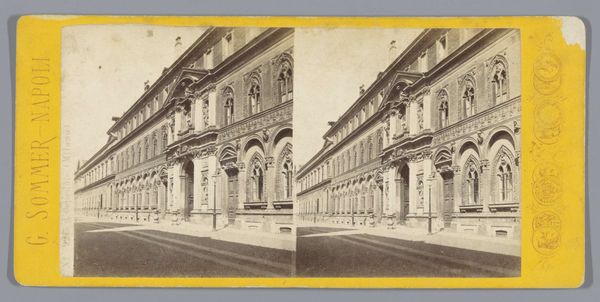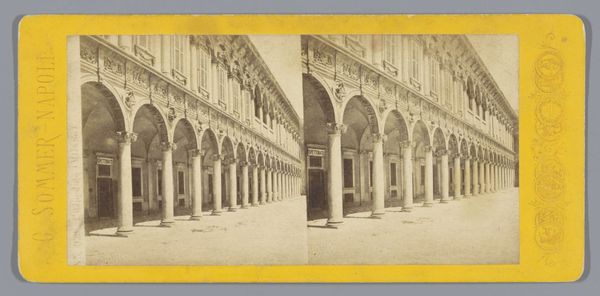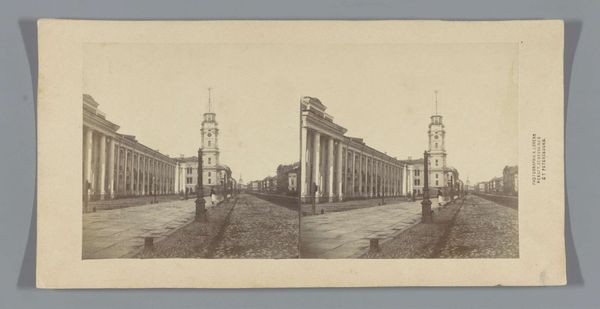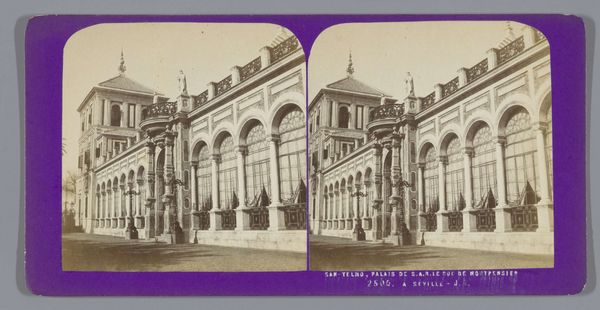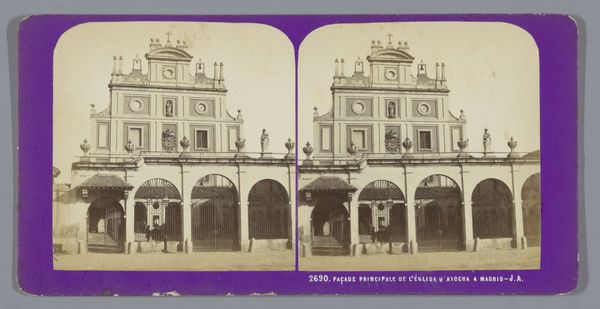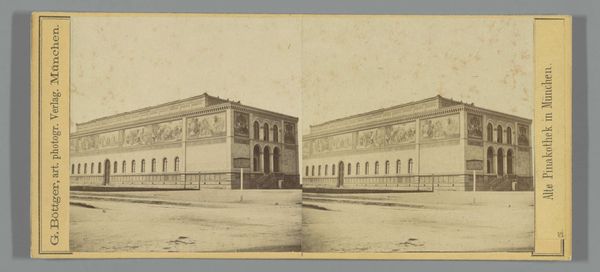
Paviljoen van Oostenrijk-Hongarije op de Wereldtentoonstelling van 1878 1878
0:00
0:00
adolpheblock
Rijksmuseum
Dimensions: height 87 mm, width 176 mm
Copyright: Rijks Museum: Open Domain
Adolphe Block created this stereoscopic photograph depicting the Pavilion of Austria-Hungary at the World Exhibition of 1878. Notice the classical columns and statues lining the pavilion. These architectural elements evoke the grandeur of ancient Rome, symbols of power and civilization that the Austro-Hungarian Empire consciously adopted. The arch, repeated along the structure, is an ancient motif that once represented triumph and imperial expansion. We can trace the evolution of this motif from Roman triumphal arches to Renaissance city gates, each time signifying authority. The statues, frozen in their marble poses, echo the idealized forms of Greek sculpture. This harkens back to the Renaissance, a time of cultural rebirth and intellectual awakening that deeply affected Europe's collective memory and subconscious. These symbols are not merely decorative, but are carefully chosen to convey a message of continuity, legitimacy, and cultural sophistication. The image evokes a longing for a glorious past, a subconscious yearning for a world of order and beauty. Ultimately, these symbols resurface, evolve, and take on new meanings in different historical contexts.
Comments
No comments
Be the first to comment and join the conversation on the ultimate creative platform.

